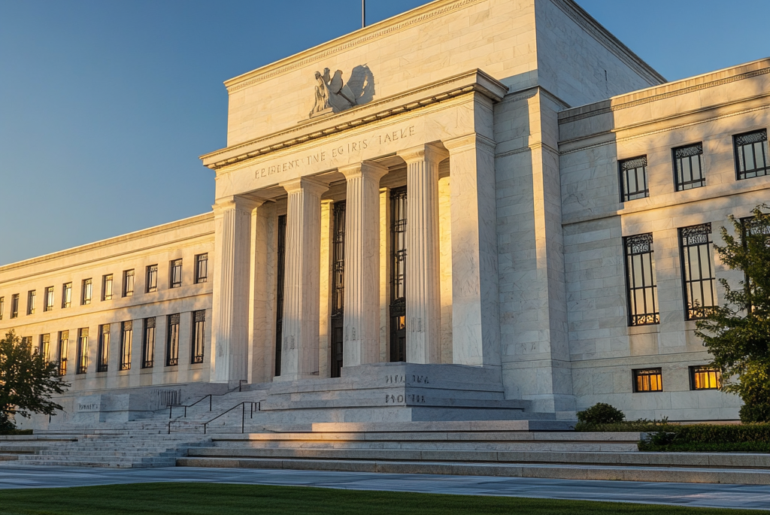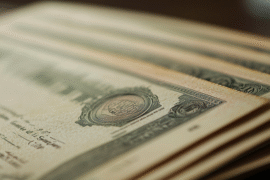This article may contain references to products or services from one or more of our advertisers or partners. We may receive compensation when you click on links to those products or services. Nonetheless, our opinions are our own.
You may discover that you are paying more attention to the U.S. Federal Reserve’s actions as you negotiate the intricacies of the current economic environment. With recent headlines announcing a hold on interest rates, it’s clear that decision-makers are treading carefully amidst a backdrop of fluctuating inflation and shifting economic indicators. You may be wondering how this pause affects you—your savings, loans, and investments. This article will explore the Federal Reserve’s current position, what factors influenced their decision, and the broader implications for everyday Americans like you. Whether you’re a seasoned investor or simply someone looking to understand the financial world better, gaining clarity on these developments is essential as you plan for the future.
- Understanding the Federal Reserve’s Decision to Hold Rates Steady
- What This Means for Your Savings and Investment Strategies
- Anticipating Future Rate Changes: Key Indicators to Watch
- Personal Finance Tips to Navigate a No-Rate Environment
- How to Use This Opportunity to Strengthen Your Financial Position
- Preparing for Potential Rate Hikes: A Proactive Approach to Your Budget
-
Frequently Asked Questions
- Why has the Federal Reserve decided to leave interest rates on hold?
- What factors are influencing the Fed’s decision-making process?
- How does leaving rates on hold impact consumers and businesses?
- What might prompt the Fed to raise rates in the future?
- What are analysts predicting for the future of interest rates?
- How does the Fed communicate its decisions to the public?
- What does this mean for the future of the U.S. economy?
- Recommended Reads
Understanding the Federal Reserve’s Decision to Hold Rates Steady
The decision to hold interest rates steady reflects a delicate balance that the Federal Reserve is striving to maintain amid ongoing economic fluctuations. As you manage your finances, it’s essential to understand the implications of this choice. A stable interest rate can have several effects on your financial situation:
-
Mortgage Rates: With the Fed leaving rates unchanged, they may remain stable, making it a favorable time to consider buying a home or refinancing your current mortgage.
-
Investment Opportunities: When rates are held steady, stock markets often react positively. This might be an opportune moment for you to explore investment options that suit your financial goals.
-
Savings Accounts: Interest rates on savings accounts might not change meaningfully in the near term, encouraging you to continue saving for an emergency fund or future purchases.
Moreover, the Fed’s cautious stance signals a commitment to assessing future economic conditions before making further adjustments. Monitoring economic indicators like inflation and employment figures can help guide your decisions. For example, if inflation remains stubbornly high, you might want to reassess your short-term spending and saving strategy.
| Key Economic Indicators | Current State |
|---|---|
| Inflation Rate | 5.4% |
| Unemployment Rate | 4.2% |
| Consumer Confidence Index | 98.6 |
By staying informed and adapting your strategies, you can navigate these uncertain waters more effectively, ultimately leading to better financial health in the long term.
What This Means for Your Savings and Investment Strategies
With the Federal Reserve’s recent decision to keep interest rates steady, you may re-evaluate your savings and investment strategies given the current economic climate. This pause in rate changes signals a period of uncertainty, and it’s crucial to focus on how you can adapt your financial approach. Here are some key considerations to keep in mind:
-
Reassess Your Savings Goals: With unchanged interest rates, conventional savings accounts may yield low returns. Consider pivoting to high-yield savings accounts or certificates of deposit (CDs) to secure better interest rates.
-
Evaluate Investment Portfolios: In a stable interest rate environment, diversifying your investments is more critical than ever. Look into sectors that may thrive despite volatility, such as technology or renewable energy.
-
Stay Informed: Monitor economic indicators and Fed communications closely, as any signs of future rate hikes or cuts can impact your portfolio. An informed investor is an empowered investor.
| Investment Type | Current Market Status | Recommended Action |
|---|---|---|
| Savings Accounts | Low Interest Rates | Consider switching to high-yield options |
| Stocks | Volatile but potential for growth | Diversify and monitor key sectors |
| Bonds | Attractive yields, but watch prices | Analyze durations and interest rate sensitivity |
By staying proactive and informed, you can more effectively navigate this uncertain landscape. Use this opportunity to strengthen your financial foundation and prepare for future changes.
Anticipating Future Rate Changes: Key Indicators to Watch
Staying informed about the potential for future rate changes is crucial. Several key indicators can help you anticipate shifts in monetary policy, allowing you to make informed financial decisions. Here are a few primary factors to monitor:
-
Inflation Rates: Monitor the Consumer Price Index (CPI) and Producer Price Index (PPI) for signs of rising prices.
-
Employment Data: Attention to employment reports, particularly the unemployment rate and job creation numbers. High employment often pressures the Fed to raise rates.
-
Economic Growth: Monitor GDP growth rates and manufacturing indices; strong growth typically leads to higher rates.
-
Fed Statements: Look out for comments from Federal Reserve officials, especially during press conferences and economic projections.
| Indicator | Impact on Rates |
|---|---|
| High Inflation | Increases likelihood of rate hikes |
| Strong Employment | May lead to rate increases |
| High Economic Growth | Encourages rate hikes |
| Positive Fed Outlook | Signals potential rate increases |
By actively tracking these indicators, you will be better prepared for any forthcoming changes that could influence your financial strategy—whether it’s your mortgage, investments, or savings plans.
In a no-rate environment, you must rethink your approach to personal finance. With stagnant interest rates, your savings accounts may not grow as quickly as you’d hope. To make the most of your finances, consider the following strategies:
-
Maximize Savings Accounts: Look for accounts that offer competitive rates, even in a low-interest environment. High-yield online savings accounts can be a valuable tool to grow your savings.
-
Invest Wisely: Diversify your investments to include stocks, bonds, or mutual funds. Aim for a balanced portfolio that aligns with your risk tolerance and long-term objectives.
-
Build an Emergency Fund: Aim to keep 3 to 6 months of living expenses saved. This will serve as a financial cushion in case of unexpected events.
-
Consider Option Investments: Explore options like real estate or peer-to-peer lending. While these have risks, they can provide better returns than traditional savings accounts.
Also, take a close look at your budget. In times when rates are low, your cash flow is critical. Identify areas where you can cut back on non-essential spending and redirect those funds into your savings or investment accounts. Every small adjustment can lead to significant gains over time.
| Action | Potential Benefit |
|---|---|
| Increase monthly savings | Build a larger safety net |
| Switch to a high-yield account | Earn more interest on savings |
| Invest in low-cost index funds | Long-term wealth accumulation |
| Utilize budgeting tools | Improve financial clarity |
How to Use This Opportunity to Strengthen Your Financial Position
With the Federal Reserve maintaining its current interest rates, you have a unique opportunity to reassess and strengthen your financial position. Here are some practical steps you can take:
-
Refinance High-Interest Debt: Now might be the perfect time to look into refinancing options for any high-interest debts, such as credit cards or personal loans. Lower rates can lead to significant savings in interest costs.
-
Enhance Your Savings Strategy: Consider increasing your contributions to savings or investment accounts. With rates steady, it’s an opportune moment to build your financial cushion or invest for your future.
-
Evaluate Your Budget: Review your monthly expenses and identify areas for reduction. A tighter budget can free up funds for savings or debt repayment.
Remember, improving your financial health is a journey. Incorporate these strategies gradually and monitor your progress over time.
| Action Item | Deadline | Notes |
|---|---|---|
| Research Refinance Options | 2 Weeks | Check multiple lenders for the best rates |
| Increase Savings Contributions | This Month | Consider setting up automatic transfers |
| Review Monthly Budget | 1 Week | Use a budgeting app or spreadsheet |
Embrace this moment to safeguard your financial future and lay a stronger foundation for growth and stability. Your proactive choices today can lead to greater peace of mind down the road.
Preparing for Potential Rate Hikes: A Proactive Approach to Your Budget
As the Federal Reserve continues to evaluate the economic landscape and holds interest rates steady for now, it’s essential to consider how you can prepare your budget for potential changes. Rate hikes can affect everything from mortgage payments to credit card interest, making it crucial to take a proactive stance with your finances. Here are some practical steps you can start implementing today:
-
Review Your Budget: Analyze your income and expenses to identify areas where you can cut back. Focus on discretionary spending that can be reduced if necessary.
-
Pay Down Debt: Prioritize paying off high-interest debts, such as credit cards. Reducing these balances can save you significant money if rates rise.
-
Build an Emergency Fund: Aim to save three to six months of expenses in a liquid account so you’re prepared for unexpected financial changes.
-
Assess Fixed-Rate Options: If you’re considering loans or mortgages, look for fixed-rate offers to lock in your rate before any potential hikes.
Staying ahead of these financial challenges can empower you to maintain control of your budget. By making adjustments now, you can cushion the impact of future rate increases and confidently navigate your financial journey.
Frequently Asked Questions
Why has the Federal Reserve decided to leave interest rates on hold?
The Federal Reserve is seeking clarity on economic indicators such as inflation and employment. By keeping rates unchanged, the Fed aims to assess the effects of previous rate hikes on the economy and ensure that any further adjustments are based on solid data.
What factors are influencing the Fed’s decision-making process?
Several factors include persistent inflation levels, job market stability, and global economic conditions. The Fed closely monitors trends in consumer spending, wage growth, and economic forecasts to gauge the timing for any future rate changes.
How does leaving rates on hold impact consumers and businesses?
Leaving interest rates on hold generally means that borrowing costs remain stable for consumers and businesses. This can encourage spending and investment, providing a supportive environment for economic growth. However, it can also lead to uncertainty about future borrowing costs.
What might prompt the Fed to raise rates in the future?
Should inflation remain above target levels or if the job market continues to show strength, the Fed could consider raising rates to prevent the economy from overheating. Additionally, any significant shifts in global economic conditions could influence their decision.
What are analysts predicting for the future of interest rates?
Many analysts suggest that the Fed may raise rates later this year or early next year, depending on inflation trends and economic data. However, there is also caution, as premature rate hikes could stifle economic growth.
How does the Fed communicate its decisions to the public?
The Federal Reserve typically communicates its decisions and rationale through official statements, press conferences, and meeting minutes. These communications provide insights into the economic outlook and the factors influencing its monetary policy actions.
What does this mean for the future of the U.S. economy?
The decision to hold rates steady reflects a cautious approach aimed at balancing economic growth with inflation control. As the Fed monitors developments closely, its future decisions will considerably impact the broader U.S. economy and financial markets.

Reviewed and edited by Albert Fang.
See a typo or want to suggest an edit/revision to the content? Use the comment form below for feedback.
At FangWallet, we value editorial integrity and open collaboration in curating quality content for readers to enjoy. Much appreciated for the assist.
Did you like our article and find it insightful? We encourage sharing the article link with family and friends to benefit as well - better yet, sharing on social media. Thank you for the support! 🍉
Article Title: U.S. Federal Reserve Seeks Clarity As It Leaves Rates On Hold
https://fangwallet.com/2025/03/27/u-s-federal-reserve-seeks-clarity-as-it-leaves-rates-on-hold/The FangWallet Promise
FangWallet is an editorially independent resource - founded on breaking down challenging financial concepts for anyone to understand since 2014. While we adhere to editorial integrity, note that this post may contain references to products from our partners.
The FangWallet promise is always to have your best interest in mind and be transparent and honest about the financial picture.
Become an Insider
Editorial Disclaimer: The editorial content on this page is not provided by any of the companies mentioned. The opinions expressed here are the author's alone.
The content of this website is for informational purposes only and does not represent investment advice, or an offer or solicitation to buy or sell any security, investment, or product. Investors are encouraged to do their own due diligence, and, if necessary, consult professional advising before making any investment decisions. Investing involves a high degree of risk, and financial losses may occur including the potential loss of principal.
Source Citation References:
+ Inspo
There are no additional citations or references to note for this article at this time.












































